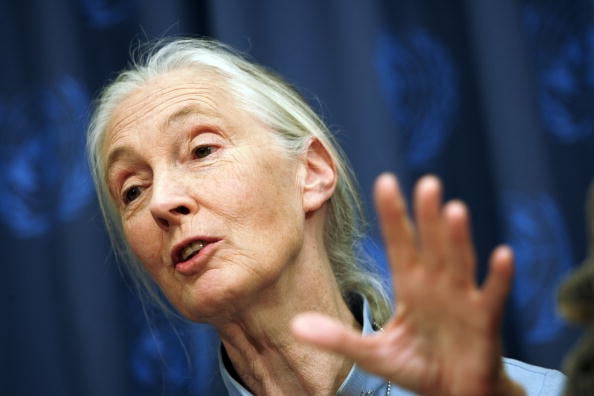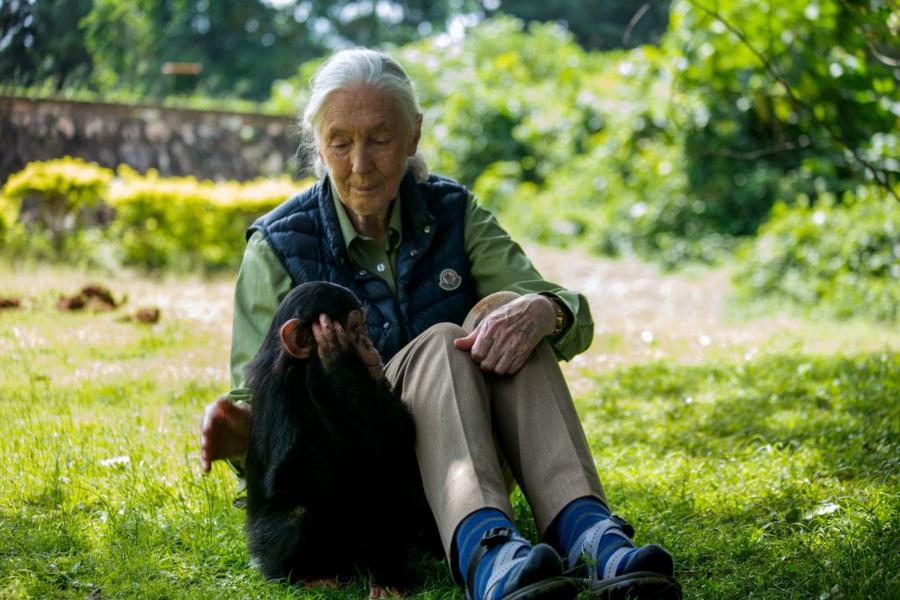What was Jane Goodall's Net Worth?
Dame Jane Goodall DBE was a British primatologist, anthropologist, and ethologist who had a net worth of $5 million at the time of her death in 2025. Jane Goodall was one of the most influential scientists and conservationists of the 20th and 21st centuries, whose groundbreaking research forever changed how humans understand primates and themselves. In 1960, at age 26, she arrived at the Gombe Stream reserve in Tanzania to study wild chimpanzees under the sponsorship of Louis Leakey. With no formal scientific training at the time, Goodall brought a fresh perspective to the field. She challenged convention by naming, rather than numbering, the chimpanzees she observed, and through patience and empathy, she documented behaviors that stunned the scientific world. Her discovery that chimps made and used tools upended the definition of humanity itself. She also recorded their complex social hierarchies, emotional depth, courtship rituals, maternal bonds, and even organized conflict, proving that human behavior shared deep roots with our closest relatives.
Her vivid accounts, brought to life in National Geographic articles, books, and television documentaries, made her a household name. Works like "In the Shadow of Man" (1971) and specials such as "Miss Goodall and the World of Chimpanzees" (1965) captivated global audiences and inspired countless young scientists, especially women, to enter the field of primatology. Over time, Goodall shifted her focus from research to activism, recognizing that chimpanzees and their habitats were under dire threat. She founded the Jane Goodall Institute in 1977, which became a major force in conservation worldwide, and later launched the Roots and Shoots program to educate young people about environmental stewardship.
Her tireless advocacy earned her the title of United Nations Messenger of Peace in 2002, as well as honors including the Templeton Prize, Dame of the British Empire, and the U.S. Presidential Medal of Freedom. Goodall's career, which spanned more than six decades, combined rigorous science with storytelling and moral urgency, leaving a legacy as both a pioneering primatologist and a global voice for hope and conservation.
Early Life
Jane Goodall was born Valerie Jane Morris-Goodall on April 3, 1934, in London, England. Her mother, Margaret Myfanwe Joseph, known as Vanne, was a novelist, while her father, Mortimer Herbert Morris-Goodall, worked as an engineer and dabbled in car racing. The family later moved to Bournemouth, on England's southern coast, where Jane spent much of her childhood. She attended Uplands School in nearby Poole.
From an early age, Goodall displayed a deep fascination with animals and nature. When she was little, her father gave her a stuffed chimpanzee named Jubilee, inspired by a chimp born at the London Zoo. Far from frightening her, Jubilee became one of Jane's most treasured possessions and symbolized her lifelong devotion to primates. She devoured books such as "Tarzan of the Apes" and the tales of Dr. Doolittle, which sparked her dream of one day traveling to Africa to live among animals. Her mother encouraged this curiosity, fostering in Jane a sense of independence, resilience, and purpose that would later prove vital in her pioneering fieldwork.
Career Beginnings in Africa
Goodall's dream began to take shape in 1957 when she traveled to Kenya to visit a friend's farm. She found work as a secretary and soon crossed paths with Dr. Louis Leakey, the celebrated paleoanthropologist and archaeologist. Impressed by her keen observational skills and passion for animals, Leakey hired Goodall as his assistant and secretary, later encouraging her to pursue field research on chimpanzees.
In July 1960, she set up camp at the Gombe Stream reserve in Tanganyika (now Tanzania) with her mother at her side for support. There, Goodall began what would become one of the most important studies in the history of science. She broke with scientific convention by naming the chimpanzees she observed—such as David Greybeard, Flo, and Fifi—instead of assigning them numbers. Her patience and empathy allowed her to witness behaviors never before documented. She discovered that chimpanzees used tools to fish termites from mounds, hunted and ate meat, and displayed complex social dynamics, including aggression, bonding, and nurturing. These revelations shattered long-held assumptions about the uniqueness of humans and forced scientists to reconsider the definition of "man."

Michael Nagle/Getty Images
Higher Education
Although she lacked formal training at the time she began her research, Goodall's discoveries quickly attracted attention. In 1962, Leakey arranged for her to study at the University of Cambridge. Remarkably, she was admitted to its PhD program without first earning a bachelor's degree—only the eighth person to achieve that distinction. At Newnham College, she encountered skepticism from some in the scientific community who criticized her for attributing humanlike qualities to animals. Undeterred, Goodall defended her methods, arguing that empathy and observation revealed truths that data alone could not. She received her doctorate in ethology in 1966, solidifying her place in academia and cementing her work at Gombe as a landmark achievement.
Jane Goodall Institute
In 1977, Goodall founded the Jane Goodall Institute (JGI), dedicated to protecting chimpanzees and their habitats while promoting community-led conservation efforts. The institute expanded globally, establishing offices in more than 30 countries. Among its most significant programs is Roots & Shoots, launched in 1991, which empowers young people in over 120 nations to lead local projects focused on the environment, animals, and human communities.
Goodall also created initiatives like the Tchimpounga Chimpanzee Rehabilitation Centre in the Republic of Congo, caring for orphaned chimps, and the Lake Tanganyika Catchment Reforestation and Education project, designed to combat deforestation and restore ecosystems. These ventures reflected her shift from researcher to global advocate, marrying scientific insight with activism.
Other Activist Endeavors
Beyond her institute, Goodall became a leading voice in the broader conservation and animal rights movements. She served as president of Advocates for Animals, co-founded Ethologists for the Ethical Treatment of Animals with Marc Bekoff in 2000, and championed causes ranging from vegetarianism to family planning and population sustainability. She supported organizations like Population Matters, Voiceless in Australia, and worked as an ambassador for Disneynature. Through thousands of lectures and appearances worldwide, Goodall spread her message of hope, emphasizing that every individual's choices—from diet to consumption—could impact the planet.
Writing Career
A gifted storyteller, Goodall reached audiences far beyond academia through her books. Her early works included "My Friends the Wild Chimpanzees" (1967) and "In the Shadow of Man" (1971), which brought her research vividly to the public. She later published "The Chimpanzees of Gombe: Patterns of Behavior" (1986), an authoritative scientific record, alongside more personal reflections such as "Through a Window" (1990). Her later works expanded to broader conservation themes, including "The Ten Trusts" (2002) and "Hope for Animals and Their World" (2009).
She also wrote extensively for younger readers, with books like "My Life with the Chimpanzees" and "Chimpanzees I Love: Saving Their World and Ours," inspiring generations of children. Her 2021 book, "The Book of Hope," co-authored with Douglas Abrams and Gail Hudson, distilled her philosophy of optimism in confronting global crises.

(Photo by SUMY SADURNI/AFP via Getty Images)
Film Appearances
Goodall's life and work became the subject of more than 40 films and documentaries, beginning with the 1965 CBS special "Miss Goodall and the World of Chimpanzees." Later projects like "Among the Wild Chimpanzees," "Jane's Journey" (2010), and the Disney film "Chimpanzee" (2012) brought her message to mainstream audiences. Brett Morgen's acclaimed 2017 documentary "Jane," using rediscovered footage by Hugo van Lawick, offered an intimate portrait of her early years at Gombe and renewed interest in her story for a new generation.
Awards and Honors
Over her career, Goodall received some of the world's most prestigious honors. In 2002, she was named a United Nations Messenger of Peace, and in 2003, she was made Dame Commander of the Order of the British Empire. Her long list of awards includes the Tyler Prize for Environmental Achievement, the French Legion of Honor, the Kyoto Prize, the Benjamin Franklin Medal, and the Templeton Prize. In 2019, Time magazine named her one of the 100 most influential people in the world. In 2025, months before her death, she was awarded the U.S. Presidential Medal of Freedom, the nation's highest civilian honor.
Personal Life
In 1964, Jane married Dutch wildlife photographer Baron Hugo van Lawick, whose images helped make her research world-famous. The couple had one son, Hugo Eric Louis, nicknamed Grub, before divorcing in 1974. The following year, she married Derek Bryceson, director of Tanzania's national parks, who died of cancer in 1980. Though she endured personal loss, Goodall often said that her deep bond with the chimpanzees and her work gave her strength. She continued to travel tirelessly into her nineties, dedicating her life to science, conservation, and spreading a message of hope.
/2017/11/Jane-Goodall.jpg)
/2014/06/GettyImages-1129399.jpg)
/2023/03/David-Attenborough.jpg)
/2016/02/joan.jpg)
/2015/08/tw.jpg)
/2021/08/Malala-Yousafzai.jpg)
/2018/03/GettyImages-821622848.jpg)
/2020/06/taylor.png)
/2019/11/GettyImages-1094653148.jpg)
:strip_exif()/2015/09/GettyImages-476575299.jpg)
/2020/02/Angelina-Jolie.png)
/2009/09/Jennifer-Aniston.jpg)
/2019/04/rr.jpg)
/2019/10/denzel-washington-1.jpg)
/2009/09/Brad-Pitt.jpg)
/2017/02/GettyImages-528215436.jpg)
:strip_exif()/2009/09/P-Diddy.jpg)
/2017/11/Jane-Goodall.jpg)
/2023/03/David-Attenborough.jpg)
/2015/08/tw.jpg)
/2014/09/GettyImages-145897680.jpg)
/2012/10/gary-larson.jpg)
/2021/08/Malala-Yousafzai.jpg)
/2015/06/Robert-Ballard-1.jpg)
/2014/05/GettyImages-488737710.jpg)
/2009/09/Cristiano-Ronaldo.jpg)
/2020/01/lopez3.jpg)
/2009/11/George-Clooney.jpg)
/2020/04/Megan-Fox.jpg)